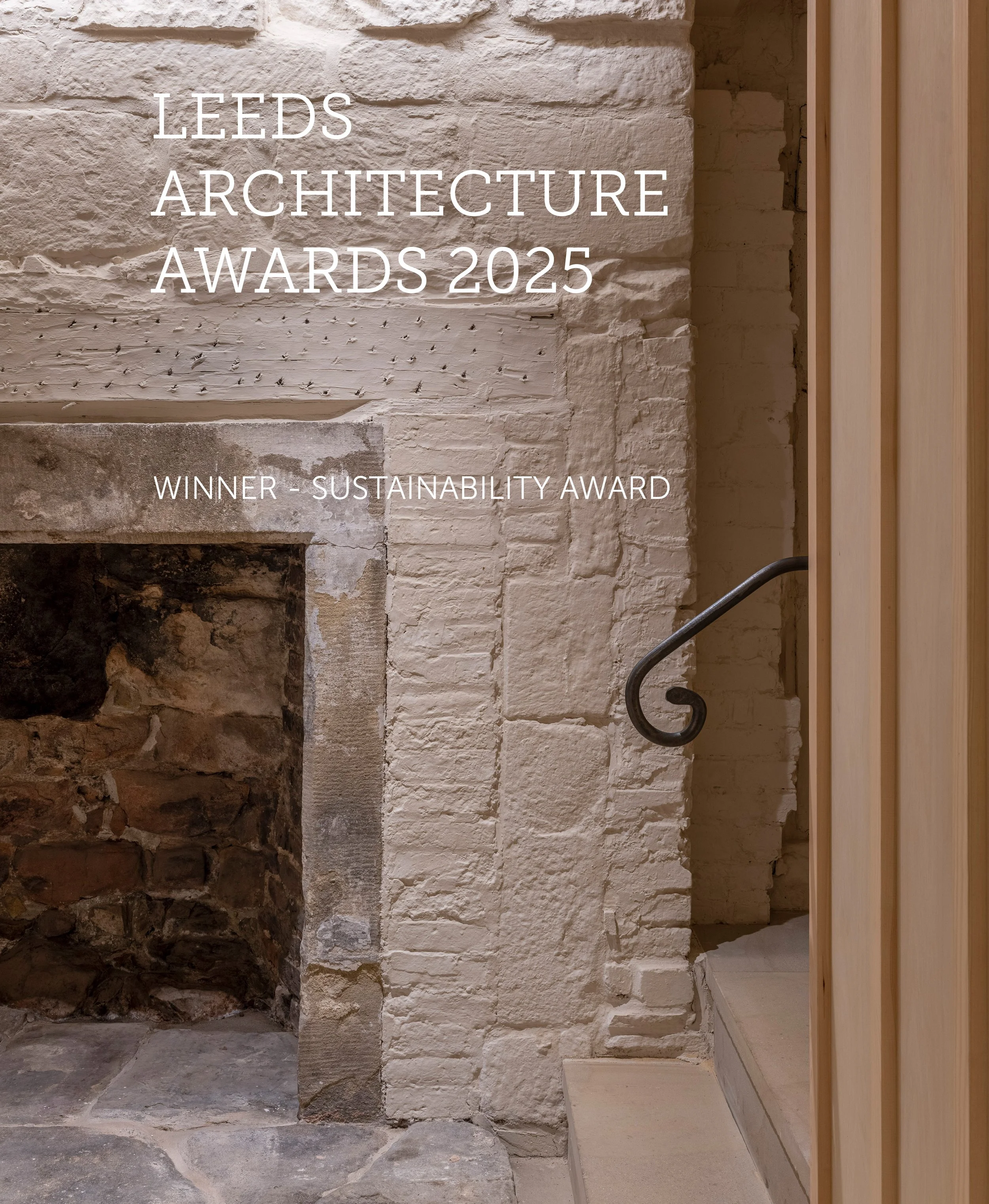We're very pleased to announce that our Calverley Old Hall Project for the The Landmark Trust was presented with the sustainability award at last weeks Leeds Architecture Awards.
A fantastic achievement for all that were involved in delivering this project and recognition that even old buildings can & need to contribute to a more sustainable future.
Working on a Grade I listed site is challenging, however building upon its inherent strengths is hugely rewarding. The client’s brief set out their ambitious plan to make their building portfolio as environmentally sustainable as possible, with a commitment to achieve net zero carbon emissions by 2045 at the latest.
Our starting point at Calverley, was to understand the fabric, it’s opportunities and limitations. It was essential to safeguard the building’s future by finding a new use that could be economically sustainable in terms of future maintenance and running costs whilst enabling it to be enjoyed by as many people as possible. Despite being over 700years it was important that any new occupants could enjoy modern day expectations of mechanical and electrical services.
This involved several aspects:
1. The implementation of practical improvements to enhance the thermal efficiency and air tightness of the building envelope.
Calverley’s thick masonry walls and paved floors provide thermal mass which is slow to respond to changes in the weather. A great deal of care was taken in finding the most appropriate method for repointing the masonry. Following trials of different mortars, we adopted a hot lime mix to maximise breathability. Historic panelling, that was found stacked in one of the rooms, was repaired and reinstated. New panelling & shutters were installed in the Great Hall as a way to conceal services, improve air tightness and insulation while reinforcing the feeling of the medieval space before the modern window openings were added from the 17thc onwards.
In some areas, woodfibre insulation was applied to the internal face of masonry walls and in other areas an insulating lime plaster was used to replace hard gypsum plaster to improve breathability.
Window and door frames were draught-stripped, leaded lights were refurbished, secondry glazing was installed in some areas and in other areas where a room had special requirements such as the Painted Chamber, replacement slim line double glazed units provided improved thermal efficiency and protection from UV light. External louvres and internal shutters were installed to improve air tightness & provide shading.
The roofs were insulated using a variety of techniques to suit each space. Disused chimneystacks were capped. Two new stoves were installed in principal rooms.
2. The careful consideration of how materials were selected, interrogating their embodied energy, sources and absolute necessity. Re-using existing services such as the below ground drains helped inform where new bathrooms should be located.
New insertions use modern building materials. The new staircase is fabricated from laminated sections, enabling smaller sections of wood to be used. The design reinterprets the principles of a traditional cantilevered staircase. The Great Hall panelling is oak veneered plywood in an oak framework.
3. The implementation of renewable energy to provide hot water and heating in a manner that would be visually inobtrusive, provide a steady background heat avoiding fluctuations in heat or humidity.
At an early stage, areas of the ground floor were opened up under an archaeological watching brief. Externally, a ground penetrating radar survey helped identify the area we could access without affecting any significant below ground archaeology. The decision to install a ground source heat pump served by six 150m deep boreholes influenced decisions on the heating and hot water strategies. The opportunity to relay the ground floors with limecrete with underfloor heating enabled us to improve insulation levels, breathability and to achieve a steady low temperature heat conducive to the output from the ground source heat pump. It also reduces the requirement for radiators which can be aesthetically intrusive in historic interiors.
The weight and size of a large buffer tank required for storing energy from the boreholes meant that an external plant room was the most practical solution. This was located to the north side of the building where it can be easily serviced. It is unashamedly modern in design incorporating an historic wall of a former outbuilding and the boundary walls of the site.
The cellar below the Cross Passage was beneficial for the distribution of services within the building.
Essential repairs to the Solar roof provided an opportunity to install wood fibre insulation between and under the rafters. The roof structure was capable of taking the additional load for an array of seven photovoltaic panels giving an anticipated annual yield of 1,020.63kWh/kWp. They are located on a south-west facing pitch which is unseen from ground level.
The sustainability strategy will be assessed by ongoing monitoring, which will be reviewed at intervals as the building is occupied over the coming years. Initial feedback is that the building environment is comfortable and manageable.

